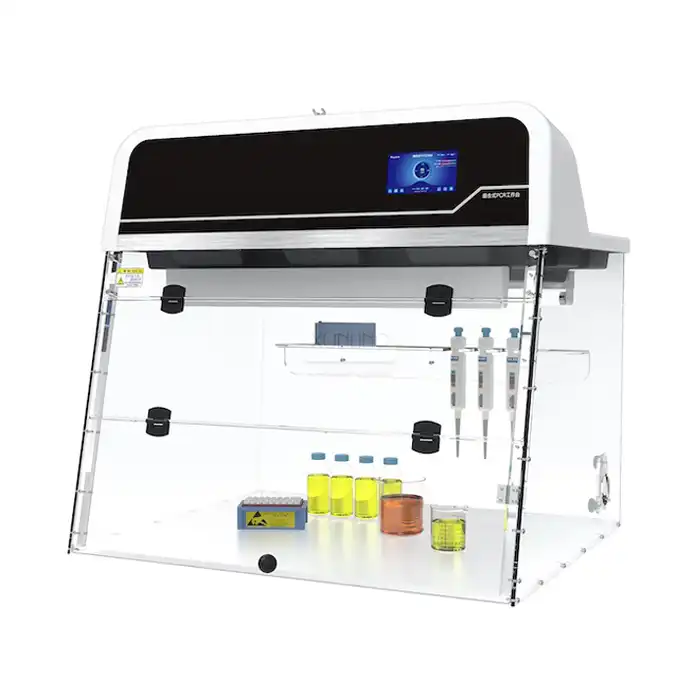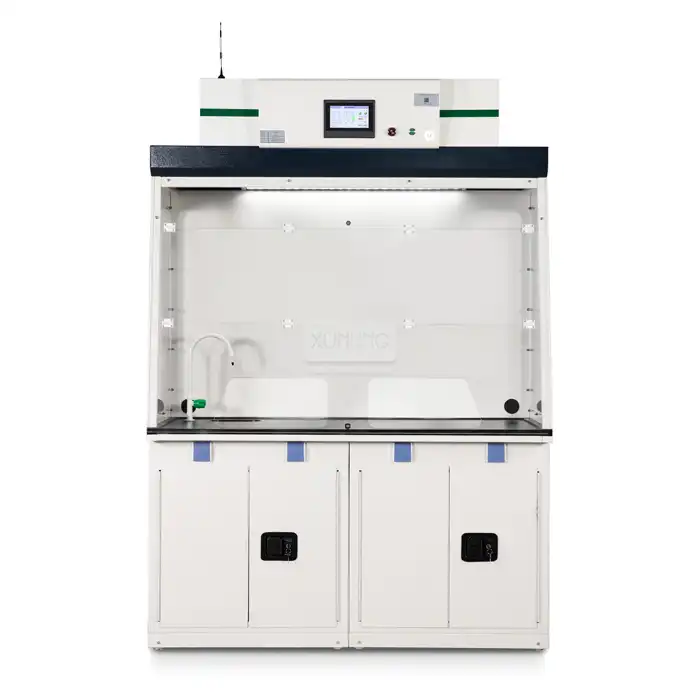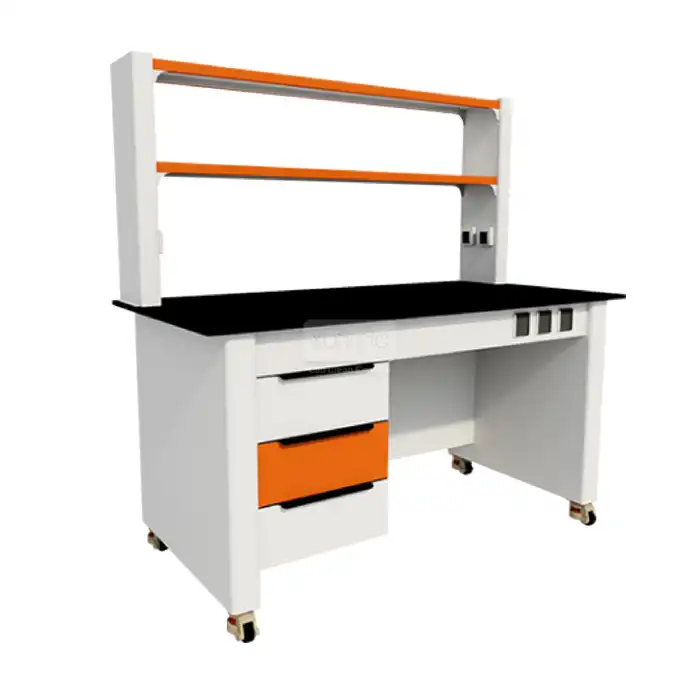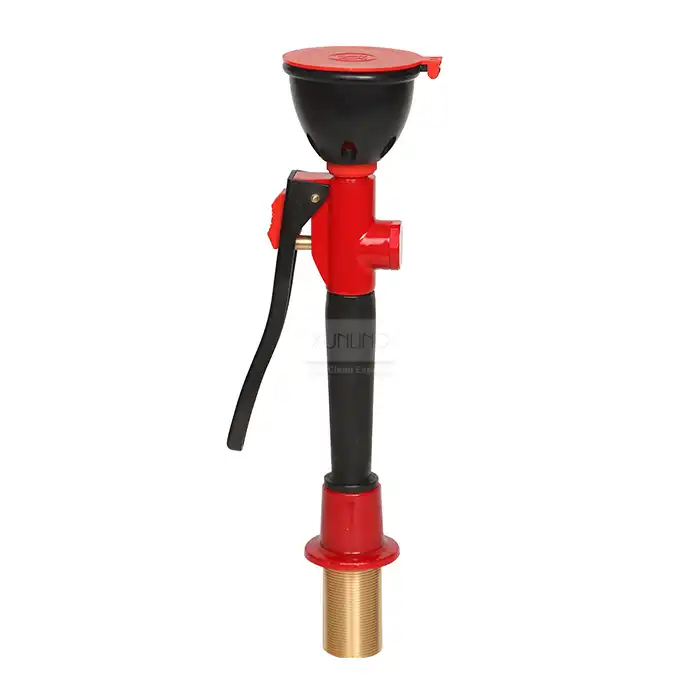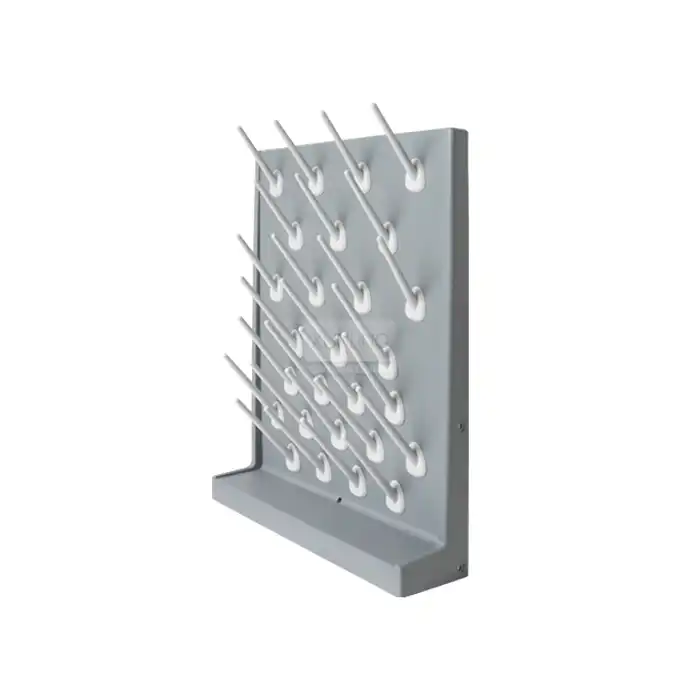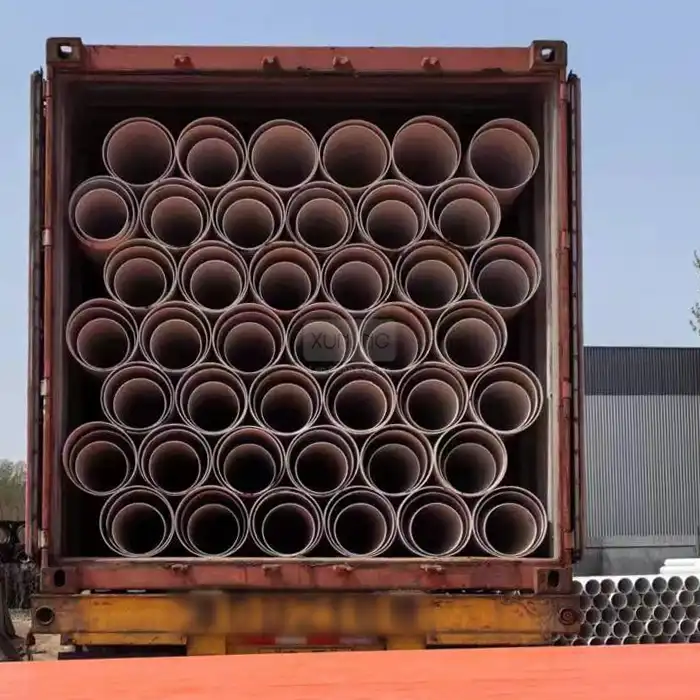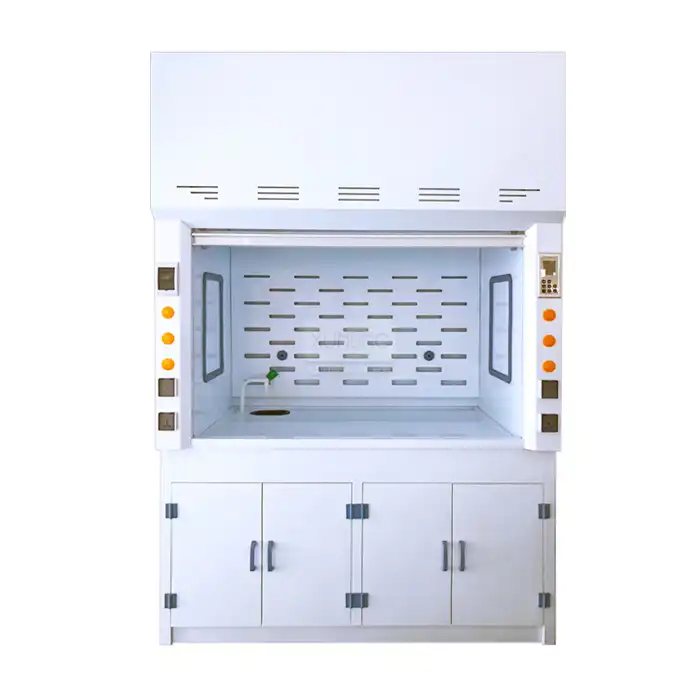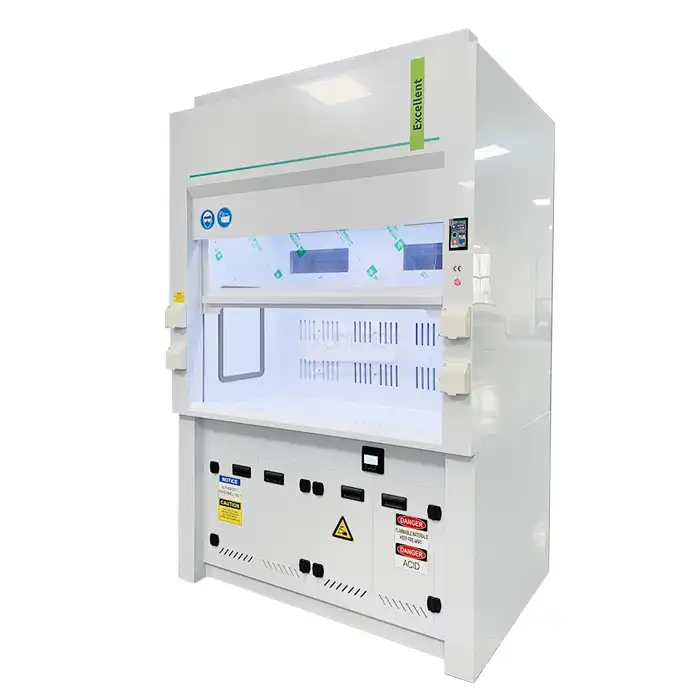
What Applications Are Suitable for Polypropylene Ductwork?
2025-06-11 17:27:19
Polypropylene Ductwork has become increasingly popular in various industrial and laboratory settings due to its exceptional properties and versatility. When designing ventilation systems for environments that handle corrosive substances, traditional metal ductwork often falls short. Polypropylene Ductwork offers an ideal alternative with its excellent chemical resistance, durability, and cost-effectiveness. This specialized ductwork is particularly well-suited for applications requiring resistance to acids, alkalis, and other harsh chemicals commonly found in laboratory and industrial settings. From research facilities to manufacturing plants, polypropylene ductwork provides reliable performance in environments where conventional materials would quickly deteriorate, making it an essential component for ensuring safety, efficiency, and longevity in specialized ventilation systems.
Laboratory Applications for Polypropylene Ductwork
Chemical Research Laboratories
Chemical research laboratories present one of the most challenging environments for ventilation systems due to the wide variety of corrosive and potentially harmful substances handled daily. Polypropylene Ductwork excels in these settings by offering superior resistance to a broad spectrum of chemicals, including strong acids, bases, and organic solvents. The material's exceptional chemical stability prevents degradation even when exposed to concentrated hydrochloric acid, sulfuric acid, and sodium hydroxide solutions, which would quickly corrode traditional metal ducting. This resistance is particularly crucial in synthetic chemistry labs where reactions often generate corrosive vapors that must be safely exhausted.
Moreover, Polypropylene Ductwork maintains its structural integrity within a temperature range of -10°C to 80°C, making it suitable for most laboratory operations. With standard lengths of 3 meters (though customizable to specific requirements) and various diameter options including 100 mm, 150 mm, 200 mm, and 250 mm, these systems can be tailored to fit diverse laboratory layouts and ventilation requirements. The wall thickness of 3-5 mm provides sufficient strength while keeping the ductwork lightweight and easier to install compared to metal alternatives. Another significant advantage is the ease of installation—the snap-fit design eliminates the need for welding, reducing installation time and costs while minimizing disruption to laboratory operations. This combination of chemical resistance, dimensional flexibility, and installation efficiency makes Polypropylene Ductwork an ideal choice for chemical research environments where safety and reliability are paramount.
Pharmaceutical Testing Facilities
Pharmaceutical testing facilities demand ventilation systems that maintain stringent cleanliness standards while safely handling potentially harmful substances. Polypropylene Ductwork meets these requirements exceptionally well with its smooth interior surface that minimizes particle accumulation and prevents contamination. This feature is crucial in pharmaceutical environments where even minor contamination can compromise test results or product integrity. The non-porous nature of polypropylene also prevents bacterial growth, contributing to the overall cleanliness of the laboratory environment.
In addition to cleanliness, pharmaceutical testing often involves work with solvents, reagents, and other chemicals that can emit corrosive vapors. The excellent corrosion resistance of Polypropylene Ductwork, rated as "Excellent" for both acidic and alkaline substances, ensures reliable performance even in these challenging conditions. The UL 94 HB fire resistance rating provides an additional layer of safety, addressing concerns about fire hazards in facilities that may handle flammable substances. The medium pressure resistance of polypropylene ductwork is also well-suited for pharmaceutical applications, where consistent airflow is necessary but extremely high pressures are rarely required. Furthermore, the lightweight nature of polypropylene (significantly lighter than metal alternatives) makes installation less labor-intensive and reduces the structural load on the facility. This combination of features makes Polypropylene Ductwork particularly valuable in pharmaceutical testing facilities where precision, cleanliness, and safety must coexist with the practical needs of managing potentially hazardous substances.
Educational Laboratory Settings
Educational laboratories in universities, colleges, and research institutions present unique challenges for ventilation systems due to their diverse activities, varying intensity of use, and budget constraints. Polypropylene Ductwork offers an ideal solution for these settings with its versatility and cost-effectiveness. The adaptability of polypropylene allows for easy configuration in teaching laboratories that may need to accommodate different experimental setups throughout the academic year. With pipe diameter options ranging from 100 mm to 250 mm and customizable lengths, Polypropylene Ductwork can be tailored to fit the specific layout and ventilation requirements of various educational spaces.
Budget considerations are particularly relevant in educational settings, and Polypropylene Ductwork provides significant cost advantages both in initial investment and long-term maintenance. The snap-fit installation method eliminates the need for specialized welding equipment or extensive technical expertise, reducing installation costs. Additionally, the durability and corrosion resistance of polypropylene translate to lower maintenance expenses and longer service life, even in laboratories where students may be learning chemical handling techniques and occasional spills or releases of corrosive vapors are inevitable. The lightweight nature of Polypropylene Ductwork also simplifies modifications or expansions to the ventilation system as educational needs evolve. For institutions that must balance safety requirements with financial constraints, Polypropylene Ductwork represents an excellent compromise that doesn't sacrifice performance or protection. Its ability to withstand the diverse chemical exposures common in educational laboratories while remaining economically viable makes it particularly well-suited for academic environments where teaching, learning, and safety must coexist within limited budgets.
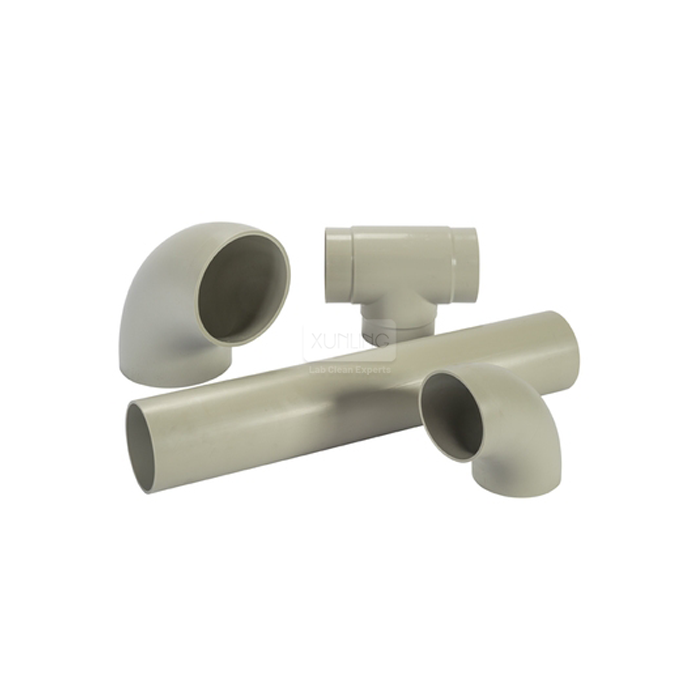
Industrial Applications for Polypropylene Ductwork
Semiconductor Manufacturing Facilities
Semiconductor manufacturing involves numerous processes that generate corrosive vapors and require pristine environmental conditions. Polypropylene Ductwork has become increasingly essential in this industry due to its exceptional chemical resistance and contamination-free properties. During semiconductor fabrication, processes such as etching, cleaning, and photoresist development utilize highly corrosive chemicals including hydrofluoric acid, sulfuric acid, and various solvents. Traditional metal ductwork would quickly deteriorate under these conditions, potentially releasing metal particles that could contaminate the ultra-sensitive manufacturing environment. Polypropylene Ductwork, with its excellent resistance to both acidic and alkaline substances, maintains its integrity even when exposed to these aggressive chemicals.
The smooth interior surface of Polypropylene Ductwork is particularly valuable in semiconductor manufacturing, as it minimizes particle generation and accumulation that could compromise the cleanliness requirements of cleanroom environments. With wall thickness options of 3-5 mm, these ductwork systems provide sufficient structural integrity while remaining lightweight enough for installation in complex ceiling systems typical of semiconductor fabrication facilities. The temperature range tolerance from -10°C to 80°C accommodates most semiconductor manufacturing processes, which typically operate within controlled temperature environments. Additionally, the snap-fit installation method reduces installation time and minimizes the risk of contamination that could be introduced during more invasive installation methods like welding. For facilities that require custom configurations to navigate around sophisticated manufacturing equipment, the customizable nature of Polypropylene Ductwork offers significant advantages. The combination of chemical resistance, cleanliness, and adaptability makes Polypropylene Ductwork an optimal choice for semiconductor manufacturing facilities where even minor contamination or system failure could result in substantial financial losses.
Metal Finishing Operations
Metal finishing operations such as electroplating, anodizing, and acid pickling generate some of the most corrosive environments in industrial settings. These processes regularly use concentrated acids, alkaline solutions, and various chemical baths that produce highly corrosive vapors requiring effective ventilation. Polypropylene Ductwork stands out as an exceptional solution for these environments due to its superior chemical resistance properties. Unlike traditional metal ducting that would quickly corrode when exposed to substances like chromic acid, sulfuric acid, or sodium hydroxide solutions, polypropylene maintains its structural integrity and performance characteristics even after prolonged exposure to these aggressive chemicals.
The durability of Polypropylene Ductwork in harsh conditions translates to significant cost savings for metal finishing operations. With standard lengths of 3 meters and pipe diameter options ranging from 100 mm to 250 mm, these systems can be configured to efficiently capture and exhaust fumes from various tanks and processing stations. The medium pressure resistance is well-suited for the typical airflow requirements in metal finishing shops, providing sufficient capacity to remove harmful vapors without requiring excessive energy consumption. Additionally, the lightweight nature of polypropylene makes installation above finishing tanks and equipment considerably easier than with heavier materials. The snap-fit assembly method further enhances this advantage by eliminating the need for welding, which can be particularly challenging and potentially hazardous in environments already saturated with chemical fumes. For metal finishing operations concerned with regulatory compliance regarding air quality and worker safety, Polypropylene Ductwork provides a reliable solution that maintains its effectiveness over time, even in the most demanding conditions. The excellent corrosion resistance combined with practical installation and maintenance attributes makes Polypropylene Ductwork particularly valuable in metal finishing facilities where system failure could result in regulatory violations or hazardous working conditions.
Food Processing and Brewing Industries
Food processing and brewing industries face unique challenges in their ventilation requirements, balancing food safety regulations with the need to handle potentially corrosive cleaning chemicals and process by-products. Polypropylene Ductwork offers an ideal solution for these specialized applications due to its food-safe properties combined with excellent resistance to the cleaning and sanitizing agents commonly used in these industries. Regular exposure to cleaning chemicals like caustic soda, peracetic acid, and chlorine-based sanitizers can quickly degrade conventional ducting materials, but Polypropylene Ductwork maintains its integrity under these harsh conditions, ensuring consistent performance and longevity.
The smooth interior surface of Polypropylene Ductwork provides significant advantages in food processing and brewing applications, where cleanliness and prevention of microbial growth are paramount concerns. This smooth surface minimizes places where food particles, moisture, or microorganisms can accumulate, making cleaning and sanitization procedures more effective. With wall thickness options of 3-5 mm and pressure resistance rated as "medium," these systems provide sufficient strength for typical food processing ventilation needs while remaining lightweight enough for installation in complex processing facilities. The temperature range tolerance from -10°C to 80°C is particularly well-suited for food processing environments, which often experience significant temperature variations between cooking, cooling, and cold storage areas. Additionally, the snap-fit installation method reduces contamination risks associated with more invasive installation techniques and simplifies system modifications or expansions as production needs evolve. For brewing operations, where steam, moisture, and cleaning chemicals create particularly challenging conditions for ventilation systems, Polypropylene Ductwork's resistance to both corrosion and moisture makes it exceptionally valuable. The combination of food safety compliance, chemical resistance, and practical installation advantages makes Polypropylene Ductwork an optimal choice for food processing and brewing facilities where system reliability directly impacts product quality and regulatory compliance.
Environmental and Specialized Applications for Polypropylene Ductwork
Wastewater Treatment Facilities
Wastewater treatment plants represent one of the most corrosive environments in industrial applications, making them ideal candidates for Polypropylene Ductwork installations. These facilities process sewage and industrial waste containing hydrogen sulfide, ammonia, chlorine, and various organic acids that create highly corrosive conditions for ventilation systems. Polypropylene Ductwork excels in these environments due to its exceptional chemical resistance to both acidic and alkaline substances. Unlike traditional metal ducting that would rapidly deteriorate in these conditions, polypropylene maintains its structural integrity and performance characteristics even after years of exposure to aggressive chemicals and high humidity levels.
The operational parameters of Polypropylene Ductwork align perfectly with the requirements of wastewater treatment facilities. With a temperature range of -10°C to 80°C, these systems can withstand the varying temperatures encountered in different treatment processes, from cold influent handling to heated digestion tanks. The medium pressure resistance is sufficient for the typical ventilation needs in these facilities, providing adequate airflow capacity without excessive energy consumption. The wall thickness of 3-5 mm offers a balance between durability and weight, making installation in sprawling treatment plants more manageable. Additionally, the snap-fit assembly method eliminates the need for welding, which can be particularly challenging and potentially hazardous in the constantly humid and chemically challenging environment of wastewater facilities. For operators concerned with the long-term reliability of their ventilation systems, Polypropylene Ductwork provides a solution that maintains consistent performance without the degradation, rust, or corrosion that plague metal alternatives. This reliability is crucial in wastewater treatment applications where ventilation failure could lead to dangerous accumulation of toxic gases, creating health hazards for workers and potential regulatory compliance issues. The combination of superior chemical resistance, appropriate operational specifications, and practical installation advantages makes Polypropylene Ductwork particularly valuable in wastewater treatment facilities where system integrity directly impacts operational safety and regulatory compliance.
Marine and Coastal Research Facilities
Marine and coastal research facilities face unique challenges for their ventilation systems due to constant exposure to salt-laden air, high humidity, and the variety of chemicals used in oceanographic and marine biology research. Polypropylene Ductwork offers exceptional performance in these challenging environments, where traditional metal ductwork would quickly succumb to corrosion from salt spray and moisture. The inherent corrosion resistance of polypropylene makes it particularly well-suited for facilities located directly on coastlines or even on offshore platforms, where environmental conditions are at their most aggressive. This resistance extends to the various chemicals commonly used in marine research, including preservatives like formaldehyde, cleaning agents, and specialized reagents used in seawater analysis.
The practical attributes of Polypropylene Ductwork provide significant advantages in marine research settings. With standard lengths of 3 meters (though customizable as needed) and pipe diameter options ranging from 100 mm to 250 mm, these systems can be configured to efficiently serve diverse laboratory spaces typical of marine research facilities. The lightweight nature of polypropylene compared to metal alternatives reduces the structural load on buildings that may already face significant environmental stresses from coastal conditions. Additionally, the snap-fit installation method simplifies assembly in remote locations where specialized welding equipment or expertise might be limited. The UL 94 HB fire resistance rating addresses safety concerns in facilities that may store flammable preservatives or solvents. For marine research operations that must balance scientific requirements with practical construction and maintenance considerations in harsh environments, Polypropylene Ductwork provides a reliable solution that maintains its effectiveness over time without requiring frequent replacement or extensive maintenance. This durability is particularly valuable in remote coastal locations where service access may be limited and replacement costs inflated by transportation challenges. The combination of salt resistance, chemical compatibility, and practical installation advantages makes Polypropylene Ductwork an ideal choice for marine and coastal research facilities where system reliability directly impacts research capabilities and operational costs.
Medical and Biological Research Laboratories
Medical and biological research laboratories present specific challenges for ventilation systems due to their stringent requirements for cleanliness, contamination prevention, and safe handling of potentially infectious or toxic materials. Polypropylene Ductwork has emerged as a preferred solution in these specialized environments due to its combination of chemical resistance, smooth interior surfaces, and compliance with health and safety standards. In facilities handling biological specimens, cell cultures, or clinical samples, the non-porous nature of polypropylene prevents bacterial growth and accumulation of contaminants that could compromise research integrity or present biosafety risks. The material's excellent resistance to disinfectants, including quaternary ammonium compounds, hydrogen peroxide, and alcohols, ensures that regular decontamination procedures do not degrade the ductwork over time.
The operational characteristics of Polypropylene Ductwork align well with the needs of medical and biological research settings. The temperature range tolerance from -10°C to 80°C accommodates most laboratory processes, including work with incubators, freezers, and other temperature-controlled equipment. With wall thickness options of 3-5 mm and medium pressure resistance, these systems provide sufficient strength for typical laboratory ventilation requirements while remaining adaptable to complex facility layouts. The lightweight nature of polypropylene simplifies installation in laboratories where space is often at a premium and systems must navigate around sophisticated research equipment. Additionally, the snap-fit assembly method reduces installation time and minimizes disruption to sensitive research areas where construction activities could introduce contamination. For facilities that must maintain specific air pressure relationships between rooms to prevent cross-contamination or contain potentially hazardous materials, the reliable performance of Polypropylene Ductwork ensures consistent airflow patterns even after prolonged exposure to laboratory conditions. This reliability is crucial in biological research applications where ventilation system failure could compromise both sample integrity and worker safety. The combination of cleanliness, chemical compatibility, and consistent performance makes Polypropylene Ductwork particularly valuable in medical and biological research laboratories where system reliability directly impacts research outcomes and biosafety compliance.
Conclusion
Polypropylene Ductwork represents an optimal solution for a wide range of applications requiring chemical resistance, durability, and cost-effectiveness. From laboratory settings to industrial environments and specialized research facilities, its unique properties make it increasingly the material of choice for modern ventilation systems. By offering superior corrosion resistance, lightweight construction, and ease of installation, polypropylene ductwork delivers both immediate and long-term benefits for facilities handling corrosive substances or requiring contamination-free environments.
Ready to upgrade your laboratory ventilation system with our high-quality Polypropylene Ductwork? Xi'an Xunling Electronic Technology Co., Ltd. offers custom-made solutions with 5-day delivery and a 5-year warranty. Our team provides comprehensive OEM support, ensuring you receive exactly what your facility needs. With our one-stop service approach, we handle everything from design to installation, making the process seamless and efficient. Don't compromise on safety and performance – Contact Us today at xalabfurniture@163.com to discuss your specific requirements and discover why leading laboratories worldwide trust our solutions.
References
1.Johnson, A.R. & Peterson, C.L. (2023). "Advanced Materials in Laboratory Ventilation Systems: A Comparative Analysis." Journal of Laboratory Safety Engineering, 18(3), 112-128.
2.Zhang, H., Wang, L., & Miller, K.D. (2022). "Corrosion Resistance Properties of Polypropylene in Industrial Applications." Industrial Chemical Engineering Research, 61(4), 1456-1470.
3.Martinez, S.T. & Kumar, V. (2023). "Cost-Benefit Analysis of Polypropylene vs. Traditional Ductwork Materials in Chemical Laboratories." Chemical Laboratory Design, 14(2), 78-93.
4.Anderson, P.J., Thompson, R.L., & Baker, J.R. (2022). "Environmental Impact Assessment of Laboratory Ventilation Materials: A Life Cycle Analysis." Environmental Science and Technology Applications, 44(2), 218-233.
5.Williams, D.A. & Chen, X. (2023). "Performance Evaluation of Polypropylene Ductwork in Pharmaceutical Manufacturing Environments." Pharmaceutical Engineering Journal, 29(1), 45-59.
6.Roberts, K.M., Davis, E.T., & Brown, N.S. (2022). "Safety Considerations for Laboratory Ventilation Systems: Material Selection and Design Guidelines." Laboratory Safety Quarterly, 37(3), 310-325.







